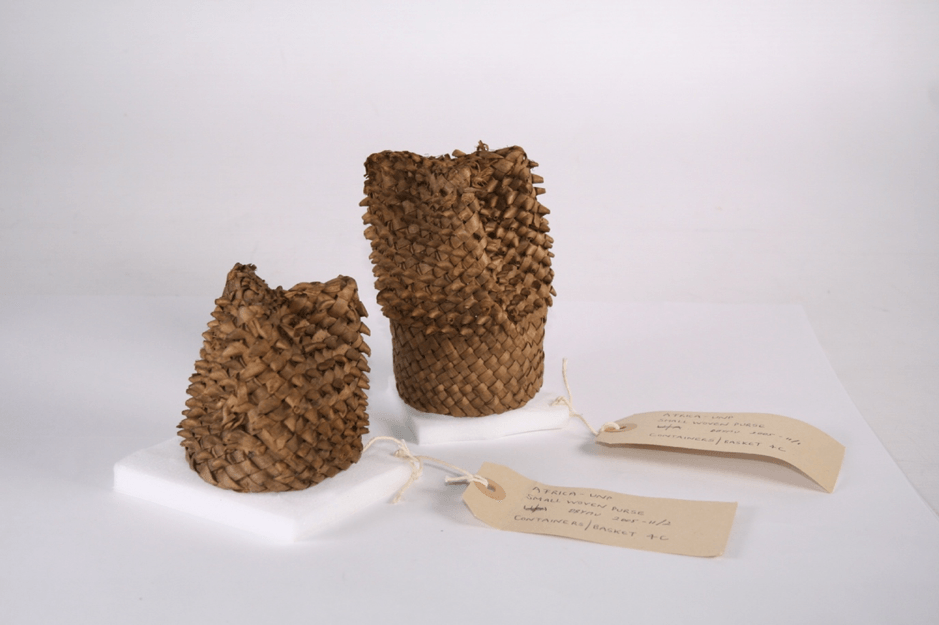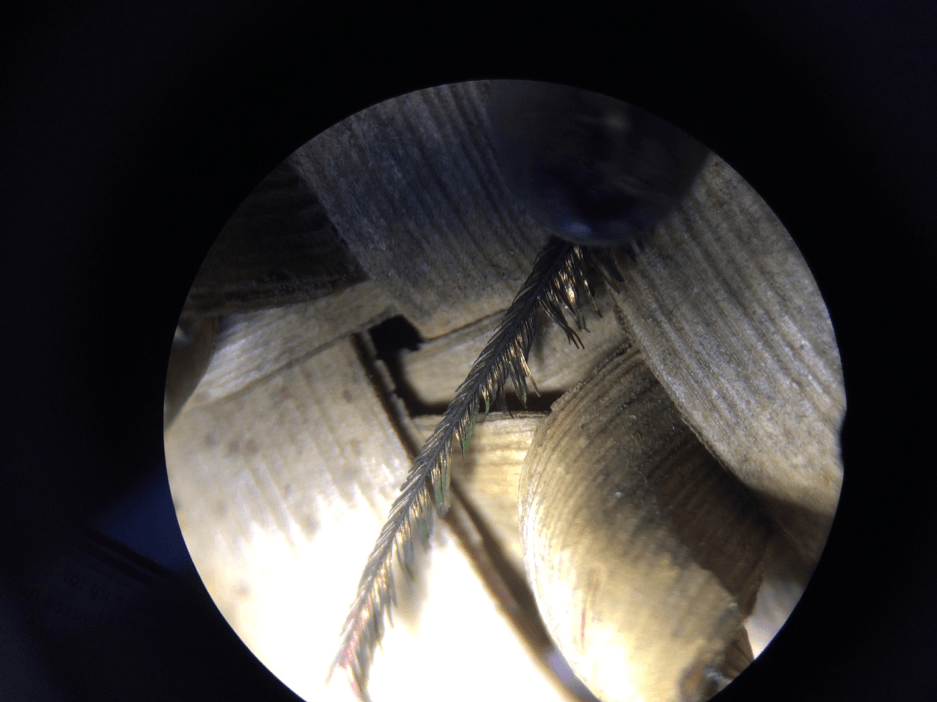by Joe G. Martin
Level 2 Conservation student

Conserving this carrying vessel allowed for an exploration of reshaping basketry and the development of knowledge of organic materials in conservation. From examining the purse under magnification, I was able to discover multiple factors pointing to the origins of the artefact. A small insect nest and frass appeared to be that of a South African lacewing (a type of small flying insect with translucent and reflective wings).

A miniscule feather also found under microscope analysis in the base of the purse appeared to be that of the orange-breasted sunbird (Anthobaphes violacea), which is also native to South Africa. This bird was too small for eating, therefore, with its vibrant coloration it seems likely it was used purely for ceremonial purposes. This provides an insight into the use of the carrying vessel for the transportation of small birds and other foraged items such as berries.

Following further research, it is clear that reeds such as those used in the construction of the object are not in abundance across the continent and are rather focused in areas around marshes or landscapes with moisture-rich soil. The Elegia tectorum plant (also known as cape thatching reed) was particularly used in the south and south-western regions of Africa and microscopic analysis confirmed that this was the material used to weave the purse. Due to the object’s organic composition, the condition (and lack of deterioration) would suggest a date of production in the early 20th century. In order to reshape the purse, humidity had to be carefully applied using a preservation pencil, within a controlled environment. This involved surrounding the purse with a light mist, before the material became supple enough to change its structure. With the use of acid-free tissue, small balls of tissue were fashioned and pushed gently into the purse, ensuring that the vessel held its new form while remaining moisture evaporated. Two PH neutral foam bases were then hand shaped with a scalpel, and the reshaped halves placed on top.
